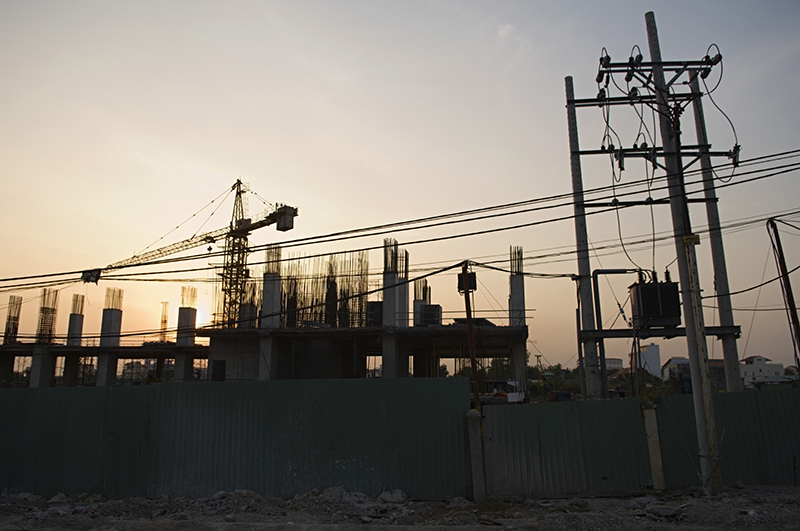A lack of space for new housing along Guyana’s coast has led the government to establish a landmark development project inland. Focused on sustainable and inclusive land use, Silica City will be a place to work, live and play; and the government invites U.S. investors to be part of this exciting new venture

Since the People’s Progressive Party came to power in 1992, the development of affordable housing has been one of its top priorities. Over the past two decades the government has helped to get many Guyanese onto the property ladder by building between 70,000 to 80,000 housing units for the country’s small population of 747,884.
The government’s “Affordable Housing for All” scheme has not only helped to fulfill the dreams of tens of thousands of citizens, it has also supported economic growth. The housing and construction sector contributes around 11% to GDP and employs thousands directly and indirectly. The government is fiercely proud of its housing programme, which has been one of the major successes of this and previous PPP administrations.
Up to now development has concentrated around the coastal area where the majority of the population lives. Additional land for new housing schemes along the coast and in and around the capital Georgetown has become scarce in recent years. “From a planning perspective it is becoming increasingly more difficult for us to find plots of land on the East Coast. We cannot locate lands on the East Coast now that can be used for housing development, because Guyana Sugar Corporation is still the largest owner of land on the East Coast, and they are basically not ready to divest themselves of any portion of land in that area,” the Housing Minister Mohamed Irfaan Ali said at a press conference in September.
The dearth of coastal land available for development has forced the government to look to building inland. With 80% of the population taking up just 20% of the country’s landmass, 83% of Guyana’s inland remains covered in lush forest, leaving ample space for construction. However any residential, industrial or commercial construction projects must adhere to the government’s sustainable development and green economy agenda.
The first major inland sustainable housing project was launched at the International Building Expo in Georgetown in July 2013 and is one of the country’s most ambitious ventures to date.
Named Silica City (S-sustainable, I-inclusive, L-land use, I-investment, C-Comprehensive, A-affordable), this multibillion-dollar development is the government’s vision to create a sustainable city in which 40,000 residential units will be built over the coming years.
Located in the Hilly Sands area along the Soesdyke-
Linden Highway, a main transport connector to Brazil and Guyana’s international airport, the city will offer more than 5,000 acres for investment for varied land uses, such as commercial, residential, recreational, institutional and infrastructural.
On the development of Silica City, Minister Ali said, “Flooding, climate change, land availability, infrastructure upgrade and expansion, future plans for a deepwater port that will necessitate the expansion of our highway all the way to Linden, all of this make Silica City a viable mid-town, mid-point area, and a development and opportunity for Guyanese people. We are going to pursue this dream; we are going to pursue this ambition with vigor because we at the Ministry of Housing believe strongly in the accomplishment of this dream.”
The city will first be established as an urban centre containing 1,000 homes. With progressive development, it will evolve into a well planned sustainable city in which people will be able to “live, work and play”. The overall vision for the town is not only to provide residential opportunities, but also employment, business, social, educational and recreational opportunities. By providing such opportunities in the city itself, it will prevent the bulk of residents having to travel to the current economic centre of Georgetown, located 30 miles from Silica (indeed less traffic on the road to Georgetown will be an offshoot of Guyana’s low carbon development strategy).
Successful implementation of the Silica City project will be dependent on a number of critical factors, including: the availability of expertise in fields like town planning, urban design and civil engineering; land tenure arrangements under the auspices of the Guyana Lands and Survey Commission; funding and investment; and partnerships with the private sector.
Beyond residential development, there have been several investment opportunities identified for private investors in this landmark project, in areas such as: infrastructure (water, sewage, electricity and trunk roads), commercial development (banks, retail, offices, and hotels), social amenities (hospitals, schools, and universities), agricultural and agro-industrial developments (agro-processing and packaging facilities), and tourism and recreational facilities.
It is envisioned that a fully developed Silica City with attractive employment, business, educational and recreational opportunities may not only attract citizens from Guyana’s coastal area, it could also entice the Guyana diaspora (many of whom have gone onto to be successful in the U.S.) and their children back home.
Back in 1999, the IMF identified Guyana as the country with the largest brain drain in South America; 70% of individuals with a tertiary education had moved to the U.S. Silica City may well be the project that could kick start a brain gain with the return of educated and highly skilled Guyanese from the U.S. and beyond. In doing so, the city could become the beating heart of the diversified and knowledge-based economy that the government is striving to create.
0 COMMENTS